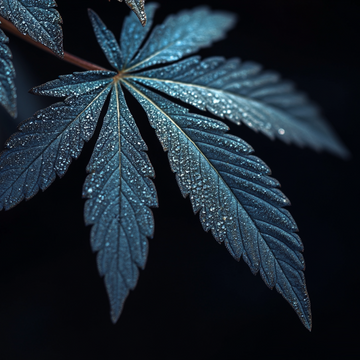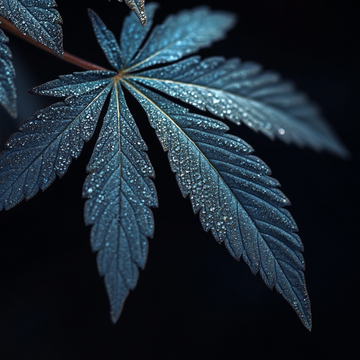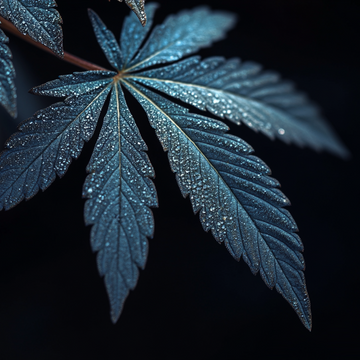Best Growing Techniques: Tips for Healthy and High-Yielding Plants
Growing high-quality plants requires knowledge, patience, and the right techniques. Whether you're a beginner or an experienced grower, optimizing your growing process can significantly improve plant health, yield, and overall success. This guide will walk you through the most important techniques for the best results.
1. Choosing the Right Growing Medium
Choosing the right growing medium is crucial for plant development. There are three main options:
Soil: The most traditional method. Nutrient-rich organic soil is ideal for beginners as it provides a natural buffer against mistakes.
Coconut fiber: A sustainable alternative to soil with excellent aeration and water absorption.
Hydroponics: A soilless system in which plants absorb nutrients directly from water. This method allows for faster growth and higher yields, but requires more technical knowledge.
2. Provide Optimal Lighting
Light is one of the most important factors for plant growth. Depending on whether you're growing indoors or outdoors, you'll want to optimize your lighting.
Outdoor cultivation: Ensure plants receive at least 6–8 hours of direct sunlight daily.
Indoor cultivation: Use LED or HID lights and ensure the correct light spectrum is used for each growth phase:
Vegetative phase: Blue spectrum (4000K–6500K) promotes strong leaf and root growth.
Flowering phase: Red spectrum (2700K–3500K) enhances flower formation and resin development.
Proper placement of lights and adjusting their distance from the plants prevents problems such as excessive stretching or heat stress.
3. Maintain ideal temperature and humidity levels
Temperature and humidity levels play a crucial role in plant health.
Temperature Guide:
Seedling Phase: 20-25°C (68-77°F)
Vegetative Phase: 22-28°C (72-82°F)
Flowering Phase: 18-26°C (65-78°F) for optimal flowering
Humidity Levels:
Seedlings: 65-70%
Vegetative Phase: 50-60%
Flowering Phase: 40-50%
Late Flowering: 30-40% (to prevent mold and bud rot)
Adequate ventilation, fans, and dehumidifiers can help maintain these levels.
4. Nutrient Management
Plants require a balanced mix of macro- and micronutrients for optimal growth. The three essential macronutrients are:
Nitrogen (N): Promotes leaf and stem development (important during the vegetative phase).
Phosphorus (P): Essential for root growth and flowering.
Potassium (K): Supports overall plant strength and disease resistance.
Additionally, micronutrients such as calcium, magnesium, and iron contribute to plant health. Using organic compost, liquid fertilizers, or hydroponic nutrient solutions ensures plants receive the necessary elements.
5. Proper Watering Techniques
Overwatering and underwatering are common mistakes that can affect plant health. Follow these watering guidelines:
Water when the top layer of soil is dry.
Use pH-balanced water (between 5.8 and 6.5 for most plants).
Ensure good drainage to prevent root rot.
Avoid directly spraying leaves to reduce mold growth.
A drip irrigation system can ensure consistent moisture levels without overusing water.
6. Pruning and Training for Maximum Yields
Pruning and training methods improve air circulation, light penetration, and overall yield.
Common Techniques:
Topping: Cutting off the main tip to encourage bushier growth and multiple main stems.
LST (Low-Stress Training): Gently bending branches to maximize light intake and increase yield.
Defoliate: Removing excess leaves to improve air circulation and prevent mold.
Strategic application of these techniques can optimize plant production and structure.
7. Pest and Disease Prevention
Healthy plants are less susceptible to pests and diseases. However, preventative measures are essential.
Common Pests:
Spider mites (yellowish leaves, fine webs)
Aphids (sticky residue on leaves)
Fungus gnats (small black flies in the soil)
Prevention Tips:
Ensure good air circulation with fans and ventilation.
Use organic pesticides such as neem oil and beneficial insects (ladybugs).
Check plants regularly and remove infected leaves immediately.
Avoid overwatering to prevent fungal infections.
8. Harvest and Cure for Maximum Potency
The correct timing and method of harvesting influence potency.





